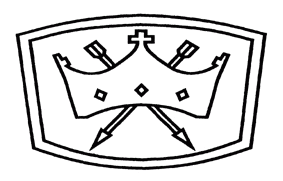
ST EDMUND THE KING, NORTHWOOD HILLS ARCHIVE SEP 2016-AUG 2017
The articles below are taken from my monthly columns in St Edmund's Church parish magazine ("The King"), which includes full details of my organ voluntaries for that month.
FROM THE CONSOLE - AUGUST 2017 - Monthly music list unavailable - please refer to the weekly pew sheets
Aug 6th - Weekly pew sheet - "The Orbit"
Aug 13th - Weekly pew sheet - "The Orbit"
Aug 20th - Weekly pew sheet - "The Orbit"
Prelude - Minuet in G Minor (Water Music) - G.F.Handel
Postlude - Voluntary No 8 - W.Boyce
Aug 27th - Weekly pew sheet - "The Orbit"
Prelude - Air (Water Music) - G.F.Handel
Postlude - Voluntary No 9 - W.Boyce
FROM THE CONSOLE - JULY 2017 - Monthly music list
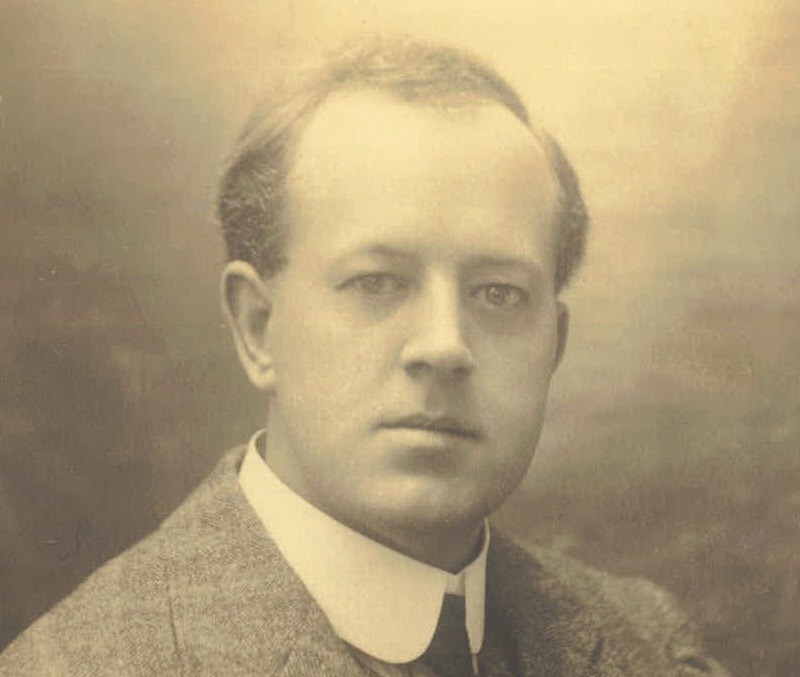
On Sunday July 2nd at 6.30pm we will be holding our annual Choral Evensong where we will be joined again by singers from Frank Jacobs’ church in Bow, East London.
The anthem is “And I saw a new Heaven” by Edgar Bainton. Bainton (pictured) was born in 1880 in the East End of London although they subsequently moved to Coventry. He won a scholarship to the Royal
College of Music and studied composing with Charles Stanford. In 1914 Bainton was visiting the Bayreuth Festival when war broke out and he was sent to a civilian detention camp where he remained for four years. During a tour of Australia he was offered the Directorship of a musical conservatoire in Sydney and Bainton and his family started a new life there in 1934. He was responsible for the introduction of music previous unheard
on the continent such as Elgar’s “The Dream of Gerontius” in 1936. He died in 1956 at the age of 76 following a heart attack. “And I saw a new heaven” was written in 1928 and sets words from Revelation:
And I saw a new heaven and a new earth; for the first heaven and first earth had passed away, and there was no more sea. And I John saw the holy city, new Jerusalem coming down from God out of heaven, prepared as a bride adorned for her husband; and I heard a great voice out of heaven, saying: ‘Behold, the tabernacle of God is with men, and he will dwell with them and they shall be his people; and God himself shall be with them and be their God; and God shall wipe away all tears from their eyes, and there shall be no more death neither sorrow nor crying, neither shall there be any more pain, for the former things are passed away.’
Anton Bruckner was born in the Austrian city of Linz in 1824. The unaccompanied motet Locus Iste was written in 1869 during his time as a music theory teacher at the Vienna Conservatory. It was composed for the dedication ceremony of the Votive Chapel at The New Cathedral in Linz, where he had been organist from 1855 to 1868. The Latin text is taken from the Gradual of the Mass for the anniversary of the dedication of a church.
This place was made by God, a priceless sacrament; it is without reproach.
Herbert Murrill was born in London in 1909. He studied at the Royal Academy of Music and was later Organ Scholar at Worcester College, Oxford. After working as a school music teacher and organist, he joined the BBC, becoming Head of Music in 1950. He was also a Professor of Composition at the RAM from 1933 until his death in 1952. Arguably his most well-known composition is his E Major setting of the Magnificat and Nunc Dimittis, published in 1947.
John Barnard studied at The John Lyon School in Harrow and later returned there as a modern languages teacher and Deputy Headmaster for almost thirty years. He was also Director of Music at a number of North-West London churches. As a hymn writer he is probably best-known for writing Guiting Power, sung to the words “Christ Triumphant, ever reigning”. We sang his Responses in A Major at the Deanery Choirs Festival held in Stanmore last October.
July 2nd - Weekly pew sheet - "The Orbit"
Prelude - Adagio for Strings – S.Barber
Postlude – Voluntary No 5 – W.Boyce
July 9th - Weekly pew sheet - "The Orbit"
Prelude – Clair de Lune – C.Debussy
Postlude – Voluntary No 6 – W.Boyce
July 16th - Weekly pew sheet - "The Orbit"
Prelude – Cantique de Jean Racine – G.Faure
Postlude – Voluntary No 7 – W.Boyce
July 23rd - Weekly pew sheet - "The Orbit"
July 30th - Weekly pew sheet - "The Orbit"
FROM THE CONSOLE - JUNE 2017 - Monthly music list
June 4th - Weekly pew sheet - "The Orbit"
Prelude - Lied - L.Vierne
Postlude - Voluntary No 1 - W.Boyce
June 11th - Weekly pew sheet - "The Orbit"
Prelude - Arabesque - L.Vierne
Postlude - Voluntary No 2 - W.Boyce
June 18th - Weekly pew sheet - "The Orbit"
Prelude - Berceuse - L.Vierne
Postlude - Voluntary No 3 - W.Boyce
June 25th - Weekly pew sheet - "The Orbit"
Prelude - Nun Sei Willkommen Jesus Lieber Herr - Flor Peeters
Postlude - Voluntary No 4 - W.Boyce
FROM THE CONSOLE - MAY 2017 - Monthly music list

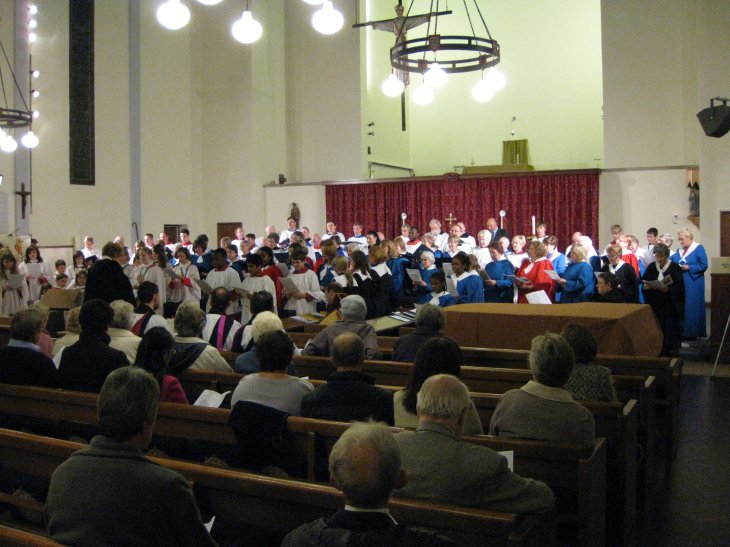
I am continuing my review of magazine articles with the year 2009. The full articles are still available online and can be found here.
During our travels we visited, amongst other places, Strasbourg and the Netherlands. In Strasbourg we stumbled across St Thomas’ Church which contains an organ played by Mozart. The great composer had stopped off
in the city for a month in 1778 on his return from Paris to Salzburg and during this time gave a recital on the Silbermann-built instrument. The original console is still on show in the church and it was
quite humbling to think that these actual keys were played by the great composer himself.
Whilst in the Netherlands we visited the city of Haarlem. Dominating the central market square is the Grote Kerk (Great Church) dedicated to Saint Bavo, the city’s seventh century patron saint. The present organ
was built in 1738 by Christian Muller and is regarded as one of the world’s great organs. The wonderful case was built by the sculptor Jan van Logteren. Mendelssohn, Handel and Mozart have all performed on the instrument.
In October, St Edmund’s hosted the Deanery Choirs Festival (pictured) and in that month’s column I wrote about the music which was to be performed, including Malcolm Archer’s “Rejoice the Lord is King” and Charles Wood’s “O Thou the Central Orb”.
In November I wrote about St Cecilia, the Patron Saint of Music, who we celebrate on November 22nd. The origins of Cecilia are somewhat uncertain although she may have died in Sicily under Emperor Marcus Aurelius around 180. Her musical fame rests on the legend that she praised God by singing to him as she lay dying a martyr’s death. A number of composers, including Purcell, Howells and Britten, have written choral works dedicated to her.
My December column was devoted to two settings of the Coventry Carol. This sixteenth century carol was written for The Shearman and Tailors’ Pageant as part of the Coventry mystery plays. These were a cycle of mediaeval plays from the West Midlands city, the earliest recorded dating from 1393. In 1956, Kenneth Leighton set these words - “Lullay, Lulla, Thou Little Tiny Child” - for solo soprano and unaccompanied chorus. In 2007 I chose this piece as one of my ten favourite Christmas carols. The Coventry Carol also forms the third movement of one of my favourite pieces of Christmas instrumental music – the Carol Symphony by Victor Hely-Hutchinson. It was written in 1927 and consists of four movements. The outer sections of the third movement are based on the Coventry Carol with a central interlude based on The First Nowell featuring a solo harp. This was used as the theme tune for BBC TV’s 1984 adaptation of John Masefield’s “The Box of Delights”. You can hear both of these settings on my Christmas page.
Anniversaries celebrated during the year were the 200th anniversary of the birth of Felix Mendelssohn (b1809), the 200th anniversary of the death of Joseph Haydn (d1809), the 250th anniversary of the death of George Frederick Handel (d1759) and the 350th anniversary of the birth of Henry Purcell (b1659).
Finally, in April I wrote about “Amazing Grace”, which had been chosen as the most popular wedding hymn in a Church of England survey of 400 couples. The rest of the top ten were 2 Make Me a Channel of Your Peace, 3 All Things Bright and Beautiful, 4 Give Me Joy in my Heart, 5 We Pledge to One Another (to the tune I Vow to Thee my Country), 6 Praise My Soul, the King of Heaven, 7 Lord of the Dance, 8 One More Step, 9 Morning Has Broken, 10 Be Still for the Presence of the Lord.
May 7th - Weekly pew sheet - "The Orbit"
Prelude – Morning ("Peer Gynt") - E.Grieg
Postlude – Postlude in D Minor – C.Stanford
May 14th - Weekly pew sheet - "The Orbit"
Prelude – On hearing the first cuckoo in Spring – F.Delius
Postlude - Toccata (“Suite Gothique”) – L.Boellmann
May 21st - Weekly pew sheet - "The Orbit"
Prelude – Prelude on “Rhosymedre” – Vaughan Williams
Postlude - Toccata (St David’s Day) – Vaughan Williams
May 26th - Ascension Day
Prelude - Christ Triumphant - J.Marsh
Postlude - Heut’ Triumphiret Gottes Sohn – J.S.Bach
May 28th - Weekly pew sheet - "The Orbit"
Prelude – Lied (24 Pieces) - L.Vierne
Postlude - Chorale Prelude on “Nun Danket” – S.Karg-Elert
FROM THE CONSOLE - APRIL 2017 - Monthly music list
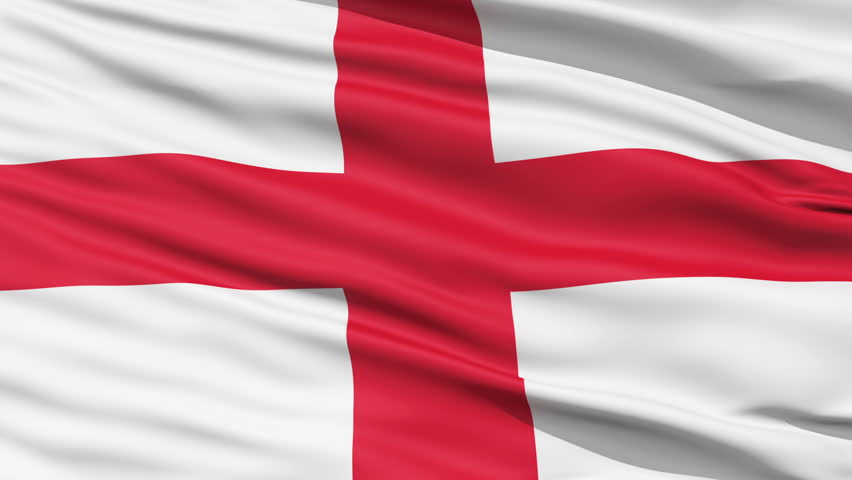
On Sunday April 23rd – St George’s Day – I will be giving a Classic Concert at St Edmund’s of English music on organ and piano to celebrate our Patron Saint (even if he was born in what is now Turkey and never
set foot in this country!)
Edward Elgar was born near Worcester in 1857. He was a keen supporter of Wolverhampton Wanderers and would cycle to matches, a round trip of about eighty miles. He even wrote the world’s first football chant for them in 1898 – “he banged the leather for goal”. The title of the five Pomp and Circumstance marches (a sixth was incomplete at the time of his death although a performing version has been created by Anthony Payne from the sketches) is taken from Shakespeare’s “Othello”: “Farewell the neighing steed and the shrill trump, The spirit-stirring drum, th'ear-piercing fife, The royal banner, and all quality, Pride, pomp, and circumstance of glorious war!” Elgar conducted the premiere of the first march in Liverpool in 1901. The words now associated with the work were added on the suggestion of King Edward VII who told Elgar he thought the tune would make a great song.
Frederick Delius was born in Yorkshire in 1862 to parents who had come to England from Germany. After studying in London he initially went into his Father’s wool business although he frequently neglected his work in favour of musical and cultural activities. Eventually Delius’ Father Julius agreed for him to pursue a musical career and he studied in Europe. In 1903 he married the German artist Jelka Rosen and they lived in a village outside Paris. “On hearing the first cuckoo in spring” was written by Delius in 1912 and features a Norwegian Folksong – In Ola Valley – also used by his friend Edward Grieg, who had persuaded Julius of his son’s quality.
Best-known for his score to the 1955 film “The Dambusters”, Eric Coates was born in Nottinghamshire in 1886. He was principal viola in Henry Wood’s Queens’ Hall Orchestra but was sacked when he sent deputies to play while he was conducting his works elsewhere! “By the sleepy lagoon” was written in 1930, Coates being inspired to write it while overlooking a beach at Selsey in West Sussex. In 1942 it was chosen as the theme tune to “Desert Island Discs” and a version by bandleader Harry James reached Number One in the US charts. The march “Knightsbridge” is the last movement from Coates’ “London Suite” (the other movements being a Covent Garden Tarantelle and a Westminster Meditation) written in 1933. It was used for a radio show called “In Town Tonight” and a sequel called “London Again Suite” followed three years later.
William Walton was born in Oldham in 1902 and was a chorister and later undergraduate (although he never graduated) at New College, Oxford. While at Oxford, Walton befriended several poets, most notably Sacheverell Sitwell. He left university without graduating and moved in with Sitwell and his literary siblings Osbert and Edith in their Chelsea home. “Façade” is a series of poems written by Edith which are recited over instrumental pieces composed by Walton. He later made two orchestral suites of this music. “Popular Song” is perhaps best-known as the theme tune for the BBC programme “Face the Music” which ran from 1966 to 1979. “Crown Imperial” was written for the coronation of King George VI in 1937, although it was actually written for that of King Edward VIII which never happened. The march's title was derived from the line "In beawtie berying the crone imperiall" from William Dunbar's poem "In Honour of the City of London". Walton died in 1983 on the Italian island of Ischia which had been his home since 1956.
Robert Prizeman was appointed choirmaster at St Philip’s Church, Norbury in South London in 1970 at the age of just 18 and is still involved there. In 1985 he founded the all-boys group “Libera”, who have a busy schedule of concerts, recordings and touring. In the same year he was appointed Musical Director of BBC “Songs of Praise” and in 1986 wrote the current toccata theme tune, replacing one written by Herbert Chappell.
Richard Rodney Bennett was born in Kent in 1936 and studied with Lennox Berkeley at the Royal Academy of Music. He wrote over fifty scores for film and television including the 1974 “Murder on the Orient Express” starring Albert Finney for which Rodney Bennett was nominated for an Oscar. “Four Weddings and a Funeral” was released in 1994 and was the highest-grossing British film in cinema history at the time. The suite comprises five sections – “Carrie’s Bedroom”, “Before the Funeral”, “After the Funeral”, “The Morning After” and “Love in the Rain”. The film also features a soundtrack of popular songs, including the song “Love is all around” by Wet Wet Wet which is the twelfth biggest selling single in Britain. Rodney Bennett died in New York in 2012, his adopted home for the last thirty years of his life.
The famous sinfonia “The Arrival of the Queen of Sheba” starts Act 3 of George Frederick Handel’s oratorio Solomon. Her visit to the King in Jerusalem - "with a very great retinue, with camels bearing spices, and very much gold, and precious stones" - is chronicled in 1 Kings, Chapter 10. Handel composed the music in 1748 with the first performance taking place in the Covent Garden Theatre (on the site of the present Royal Opera House). Although Handel was born in Germany, he was naturalised as British by the 1727 Naturalisation Act of Parliament.
Albert Ketelbey was born in Birmingham in 1875. At the age of eleven he performed one of his own piano compositions in Worcester Town Hall in front of Edward Elgar. At the age of sixteen he was appointed organist of St John’s Church, Wimbledon. After leaving music college, Ketelbey worked as an arranger of piano and orchestral music. “In a Monastery Garden” was written in 1915 following a visit to Chilworth Friary in Surrey. It incorporates birdsong and the chanting of “Kyrie Eleison” by the monks. This was followed by a number of similar light best-sellers such as “In a Persian Market” and led to Ketelbey becoming the first British millionaire composer. He retired to the Isle of Wight where he died in 1959.
John Ireland was born in Cheshire in 1879. For twenty years he was organist and choirmaster at St Luke’s Church, Chelsea and his communion service in C and the hymn tune “My song is love unknown” are regularly sung at St Edmund’s. The Villanella is the second of three pieces which make up the “Miniature Suite”, written in 1904 and later revised. A villanella a form of Italian part-song originating in Naples in the 16th century, in rustic style with a vigorous rhythm.
Apr 2nd - Weekly pew sheet - "The Orbit"
Prelude – Herzlich Thut Mich Verlangen - J.Brahms
Postlude - O Mensch, Bewein Dein Sunde Gross - J.S.Bach
Apr 9th - Weekly pew sheet - "The Orbit"
Postlude - Crown Imperial - W.Walton
Apr 13th - Maundy Thursday
Prelude - Picardy – E.Thiman
Apr 15th - Holy Saturday
Postlude - Toccata - C.Widor
Apr 16th - Weekly pew sheet - "The Orbit"
Prelude – Toccata in D Minor - J.S.Bach
Postlude - Fugue in D Minor - J.S.Bach
Apr 23rd - Weekly pew sheet - "The Orbit"
Prelude – Adagio in G Minor - T.Albinoni
Postlude - Prelude in D Major - D.Buxtehude
Apr 30th - Weekly pew sheet - "The Orbit"
Prelude – Sicilienne - M.Paradis
Postlude - Orb and Sceptre - W.Walton
FROM THE CONSOLE - FEBRUARY/MARCH 2017 - Monthly music list - Feb / Mar
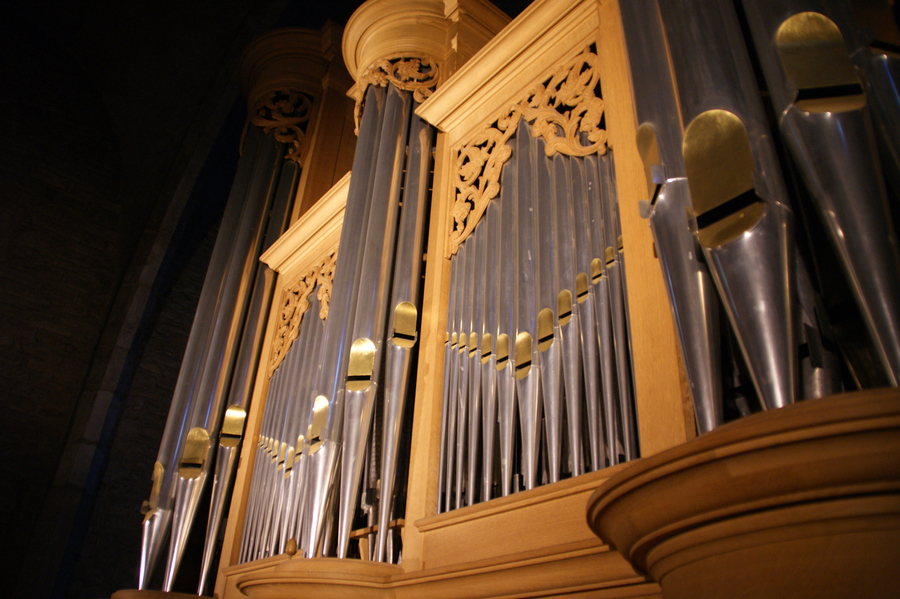
Since December 2015, when we adopted Olive, our black kitten, we have travelled to France by car via Eurotunnel and generally stop overnight in Dijon. The capital of the Bourgogne-Franche-Comté region is about halfway between
Calais and Marseille, a drive of around ten hours across France split over two days.
The earliest archaeological finds in Dijon date from the Neolithic period. It later became a Roman settlement named Divio, located on the road from Lyon to Paris. The province was home to the Dukes of Burgundy from the
early 11th until the late 15th centuries and Dijon was a place of tremendous wealth and power, one of the great European centres of art, learning and science. Dijon architecture is distinguished by, among other
things, toits bourguignons (Burgundian roofs) made of tiles glazed in terracotta, green, yellow and black and arranged in geometric patterns. Dijon is also famous for Dijon mustard which
originated in 1856, when Jean Naigeon of Dijon substituted verjuice, the acidic "green" juice of not-quite-ripe grapes, for vinegar in the traditional mustard recipe.
Our excellent cat-friendly hotel was situated in Talant, a few kilometres to the North-West of the city on a rocky promontory which offered spectacular views of the surrounding area including the distant Mont Blanc. The
church – Notre Dame de Talant – dates from the thirteenth century. There are some striking stained glass windows designed by the artist Gérard Garouste in 1998. The organ was built by Metzler
in 1996 and replaced an instrument that had originally come from Taize. Since 1890 this Swiss company has produced instruments across Europe, including Trinity College Chapel, Cambridge. The action
of the organ in Talant is entirely mechanical and has just over one thousand pipes spread over two manuals and pedals. Metzler organs use a straight and flat pedalboard as opposed to the
radiating ones seen on most British organs. This takes a bit of getting used to as I discovered first-hand when playing for a wedding at Trinity College
(for which I had to play the Wedding March from “The Sound of Music” but that’s another story!).
Sadly the church was locked during our visits so we could not experience this first hand – maybe it will be open on out next visit.
Feb 5th - Weekly pew sheet - "The Orbit"
Prelude – Promenade Sentimentale - V.Cosma
Postlude – Prelude and Fugue No 4 – J.S.Bach
Feb 12th - Weekly pew sheet - "The Orbit"
Prelude – Caonon in D - J.Pachelbel
Postlude - Prelude and Fugue No 5 - J.S.Bach
Feb 19th - Weekly pew sheet - "The Orbit"
Prelude – Master Tallis's Testament - H.Howells
Postlude - Prelude and Fugue No 6 - J.S.Bach
Feb 26th - Weekly pew sheet - "The Orbit"
Prelude – Sicilienne - G.Faure
Postlude – Prelude & Fugue No 7 - J.S.Bach
Mar 5th - Weekly pew sheet - "The Orbit"
Prelude – Ave Maria - J.S.Bach/C.Gounod
Postlude – Prelude and Fugue No 8 – J.S.Bach
Mar 12th Weekly pew sheet - "The Orbit"
Prelude – Allegretto Grazioso – F.Bridge
Postlude - Aus tiefer not schrei ich zu dir - J.G.Walther
Mar 19th - Weekly pew sheet - "The Orbit"
Prelude – Aria – Flor Peeters
Postlude - Processional – W.Matthias
Mar 26th - Weekly pew sheet - "The Orbit"
Prelude – Ave Maria – G.Caccini
Postlude – Sortie – L.Levebure-Wely
FROM THE CONSOLE - JANUARY 2017 - Monthly music list

I am continuing my review of magazine articles with the year 2008. The full articles are still available online and can be found here.
In January I wrote about the music Father Bruce Driver and his wife Barbara had chosen for their final service that month. The prelude was “Nimrod” from Elgar’s Enigma Variations and the postlude was Verdi’s Grand March from Aida. The anthems were Mozart’s “Ave Verum Corpus” and Rutter’s “A Clare Benediction” with Adrian Batten’s setting of the Mass.
In February I wrote about John Merbecke, the most performed composer at St Edmund’s. His Creed and Gloria (Advent and Lent excepted) are heard weekly and the full mass setting is also sung in Lent. It appeared in his 1550 “Booke of Common Praier Noted” for use with Edward VI’s 1549 Book of Common Prayer with melodies partly adapted from Gregorian Chant. It was rendered obsolete with the 1552 prayer book revision and lay unused for three centuries until it was adapted for the 1662 liturgy and is still widely used worldwide in many protestant traditions.
Several months were devoted to previewing and reviewing my first twenty-four hour organ marathon. Running from Noon to Noon on July 15th-16th, each hour slot was themed (by country or composer) with an evening recital entitled “Toccata!”. Requests and dedications (for a price!) were performed throughout the day and night. As I said at the time: The high point was definitely that ending and the huge sense of relief that it was over as well as the realisation of what I’d actually done. The low point came not as I’d expected in the depths of 3am and 4am but around 8am. By the time I’d got to the end my hands and feet were not always going where my brain was telling them to! The success of this event was largely due to the many people who helped and without whom I could not have undertaken this marathon. There were always at least four people in church, even overnight, and a welcome cup of coffee was always at hand. Special mention must be made of Everton, who was in the audience for more than twenty hours! Although a final amount has not yet been announced, it has already surpassed my personal target. [in the end over £5000 was raised in aid of the Church Hall roof].
Anniversaries celebrated during the year were the centenary of the birth of Olivier Messiaen and fiftieth anniversary of the death of Ralph Vaughan Williams.
My December column was a personal view of my musical Christmases. When a child, I was banned from playing carols on the piano until the beginning of November and All Saints Day is still traditionally the day when Christmas music starts to be played in the Hammond household! In 1979 I entered the Woman’s Realm Children’s Christmas Carol Writing Competition which I duly won, the prize being a Yamaha organ. I appeared on ITV’s “Magpie” programme and my composition – “The Holy Star” – was performed by a local school choir. Sadly my parents didn’t have a video recorder at the time although I have the audio of the programme. One of my other Christmas compositions, “I Sing of a Maiden” – written in 1985 during my time at Cambridge – was performed at this year’s St Edmund’s Carol Service.
Jan 1st - Weekly pew sheet - "The Orbit"
Prelude -
Postlude -
Jan 8th - Weekly pew sheet - "The Orbit"
Prelude - The Three Kings – P.Cornelius, arr.M.Hammond
Postlude - Wie Schoen Leuchtet Der Morgenstern – J.S.Bach
Jan 15th - Weekly pew sheet - "The Orbit"
Prelude - Chorale Prelude on “Dix” – M.Archer
Postlude - Prelude & Fugue No 1 in C - J.S.Bach
Jan 22nd Weekly pew sheet - "The Orbit"
Prelude - Chorale Prelude on “Stuttgart” – F.Peeters
Postlude - Prelude & Fugue No 2 in D Minor - J.S.Bach
Jan 29th - Weekly pew sheet - "The Orbit"
Prelude - Pavane pour une infante defunte - M.Ravel
Postlude - Prelude & Fugue No 3 in E Minor - J.S.Bach
FROM THE CONSOLE - DECEMBER 2016 - Monthly music list
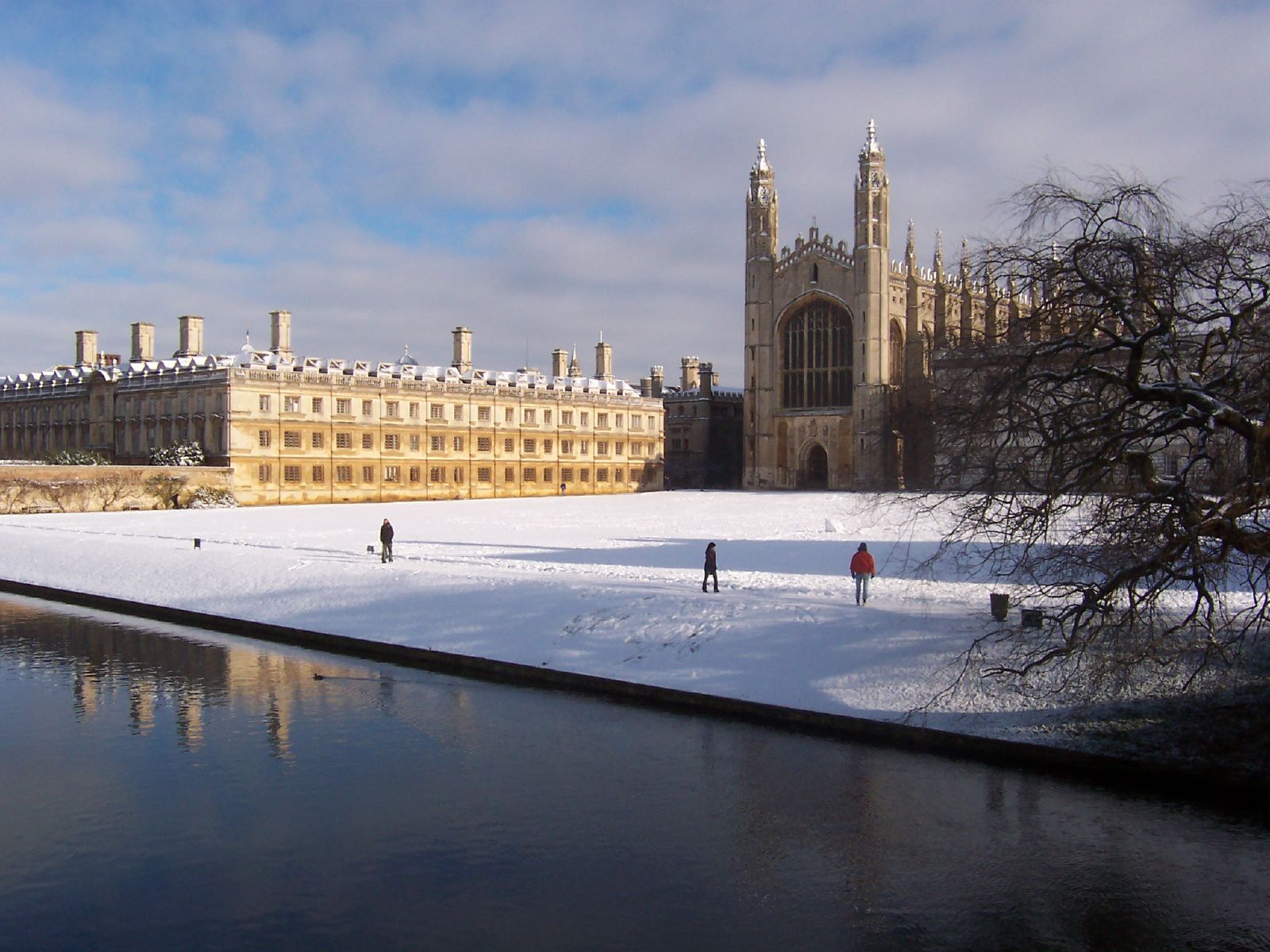
On December 18th we will be singing eight carols as part of the service of Nine Lessons and Carols.
John Joubert is a British composer of South African descent. Born in Cape Town in 1927, he won a scholarship at the age of nineteen to study at the Royal Academy of Music and has lived and worked in England ever since, settling in Birmingham. His most famous composition, “Torches” was written in 1951 and is an arrangement of a Galician melody. Joubert recalled, "I've even had carol-singers come to the door and singing it, without knowing the composer lives inside." His wife Mary is a pianist and both his children are professional string players.
“Sans Day Carol” (or the St Day Carol) was first transcribed from the singing of Thomas Beard, a villager “aged 50-60” in St Day, a Cornish village near Redruth. St Day was for three hundred years the centre of one of the richest copper mining districts in the world. St Day is probably the Breton Saint known variously as St Dei and St They. The lyrics are similar to “The Holly and the Ivy” where different colours of holly berries represent Jesus’ birth, passion, death and resurrection. John Rutter made his arrangement in 1969 while still an undergraduate at Clare College, Cambridge.
“I Sing of a Maiden” is an anonymous 15th Century Middle English lyric poem (I syng of a mayden) celebrating the Annunciation and the Virgin birth of Jesus. Although it was probably well-known in its day, the only surviving copy is in the Sloane 2593 manuscript held in the British Library which also contains the poem “Adam Lay Ybounden”, which we sang at last year’s carol service. It has been set by a number of composers, most notably by Benjamin Britten in his “Ceremony of Carols”. My setting dates from 1985 during my time as organ scholar at Peterhouse, Cambridge University.
“In the bleak midwinter” was originally written by Christina Rossetti as a Christmas poem for an American magazine, Scribner’s Monthly, in 1872. It has been set to music by several composers, most notably Gustav Holst and Harold Darke. Darke was organist at St Michael’s Cornhill in the City of London for fifty years, leaving only briefly in 1941 to deputise for Boris Ord as Director of Music at King's College, Cambridge during World War II. His setting dates from 1909 while he was a student at the Royal College of Music. Darke also wrote three of the communion settings which we sing at St Edmund’s.
Matin Responsory (“Aspiciens a longe” – I look from afar) is the First Matins Responsory for the first Sunday in Advent. A responsory is a sacred musical work sung with a cantor or small group singing verses while the whole choir or congregation respond with a refrain. The music was adapted from a Nunc Dimittis by the sixteenth century Italian Renaissance composer Giovanni Palestrina, named after the ancient Italian city of Palestrina located some twenty miles east of Rome. It appeared in the 1970 “Carols for Choirs 2” and is sung at the Advent Carol Services in King’s College, Cambridge.
The melody of Up Good Christen Folk and Listen (O Quam Mundum, Quam Jucundum) first appears in the 1582 “Piae Cantiones” ("Devout ecclesiastical and scholastic songs of the old bishops"), the original source of such well-known carols as "Unto Us A Boy Is Born", "Of The Father's Love Begotten" and "Good King Wenceslas". It was made by the Finnish clergyman Jaakko Finne and was later harmonised by the priest George Ratcliffe Woodward who included it in his 1900 “Cowley Carol Book”.
O Little one sweet (O Jesulein Suss) is an old German tune which first appeared with these words in Samuel Scheidt's "Tablaturbuch" of 1650. This publication contains harmonized accompaniments for one hundred sacred songs and psalms, pointing to the growing practice of congregational singing in Lutheran churches. It was later harmonised by J.S.Bach and it is this version we will be performing at the carol service.
Jesus Christ the Apple Tree is an anonymous 18th Century poem which became quite popular in American hymnbooks. It may be an allusion to both the apple tree in Song of Solomon which has been interpreted as a metaphor representing Christ, and to Jesus' description of his life as a tree of life in Luke and elsewhere. Elizabeth Poston wrote her setting of the poem in 1967. As well as a composer, she was a performer and academic and also worked at the BBC, most notably as an adviser on the creation of the BBC Third Programme.
Dec 4th
Prelude – Berceuse (Peterhouse Chapel Windows Suite) – B.Ferguson
Postlude – Nun Komm, Der Heiden Heiland – J.S.Bach
Dec 11th
Prelude – Gottes Sohn Ist Kommen – J.S.Bach
Postlude - Vom Himmel Hoch – J.Pachelbel
Dec 18th (10am)
Prelude – Pastorale (Christmas Concerto) – A.Corelli
Postlude - Advent Reflections – R.Bonighton
Dec 18th (6.30pm)
Prelude – Six Interludes on Christmas Carols – W.Lloyd-Webber
Postlude – In Dulci Jubilo – J.S.Bach & Toccata – E.Gigout
Dec 24th
Prelude – In Dulci Jubilo – D.Buxtehude
Postlude - In Dulci Jubilo – J.S.Bach & Carillon Sortie – H.Mulet
Dec 25th
Prelude – Noels – N.Lebegue
Postlude – Sleigh Ride – L.Anderson
FROM THE CONSOLE - NOVEMBER 2016 - Monthly music list
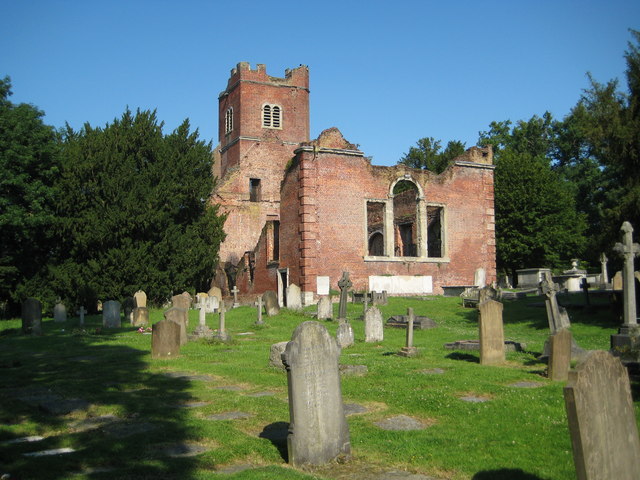
On Saturday October 8th, eight of us made our way to St John’s Church in Stanmore for the annual Harrow Deanery Choirs Festival (which was held at St Edmund’s last year) which the choir has been rehearsing for the last couple
of months. There has been a church in the area since the sixth century and the brick church (now a ruin in the churchyard of the present church) was built in 1632. This was used until the present church was built in
1850. Originally the brick church was going to be demolished but strong local outcry prevented this from happening. It was Grade II listed in 1951 and recent renovation work has secured its immediate future. The organ, built
by Frederick Rothwell in 1925, has an unusual feature where the stops for a particular manual are placed immediately above the relevant keyboard rather than at the side. This was patented by Rothwell, who had installed
an organ in the Temple Church in 1910 which was described by the great organist George Thalban-Ball as “the most beautiful organ in the world”. Sadly the instrument is in rather a poor condition at the moment
and this was evident with rather strange sounds emanating during the afternoon. There were around 75 singers, including a number of girls who gave an excellent rendition of the solo part
of Stanford’s G Major Magnificat. Stanford wrote this as part of a Morning, Communion and Evening Service set in 1902, the fourth of six which he wrote during his lifetime. It was dedicated to his one-time colleague
at the Royal College of Music Sir George Martin, who was at the time organist of St Paul’s Cathedral. The anthem was “All Creatures of our God and King”, a setting of the words attributed to St Francis of Assisi
by William Harris, organist at St George’s Chapel, Windsor. He was involved in the musical education of the teenage Princesses Elizabeth and Margaret who spent the wartime period at Windsor Castle and would
sing madrigals with Harris and the choristers every Monday. The introit was John Barnard’s lovely arrangement of his own hymn tune “Great Stanmore” (written when he was Director of Music there) to the
words “Love is the touch of intangible joy” which will become part of the repertoire at St Edmund’s. Barnard was a pupil and later a modern languages teacher at The John Lyon School in Harrow who is
probably best known for his hymn tune “Guiting Power” (Christ Triumphant, Ever Reigning). He also wrote the Preces and Responses we sang. The service went very well (mainly!) and it is always good
to perform more ambitious repertoire with a larger group of singers. And the tea was excellent!!
Nov 6th
Prelude – Clair de Lune – C.Debussy
Postlude – Pomp & Circumstance March No.4 - E.Elgar
Nov 13th
Prelude – Nimrod – E.Elgar
Postlude – Fame and Glory – A.Matt
Nov 20th
Prelude – Suite from "Henry V" - W.Walton
Postlude – Orb and Sceptre – W.Walton
Nov 27th
Prelude: O come, O come, Emmanuel - Colin Hand
Postlude – Wachet auf ruft uns die stimme - J.S.Bach
FROM THE CONSOLE - OCTOBER 2016 - Monthly music list

I am continuing my review of magazine articles with the year 2007. The full articles are still available online and can be found here.
At the start of the year I continued to discuss the nation’s twenty favourite hymns as surveyed by BBC’s “Songs of Praise” at the end of 2005. You can listen to any of these hymns by going to www.mark-hammond.co.uk/hymnxx.mp3 and replace xx with the number (eg hymn 6 would be www.mark-hammond.co.uk/hymn06.mp3). In fifth position was Love Divine, all loves excelling, followed by Be thou my vision (4th), The day thou gavest (3rd – my personal favourite) and Dear Lord and Father of mankind (2nd).
In first place was “How great Thou art, a Swedish hymn with words written by poet and lay minister Carl Boberg and set to an old Swedish folk melody. Boberg wrote it after being caught in a thunderstorm while walking back from a church meeting during the summer of 1885. On a visit to Carpathia, British Missionary Stuart Hine and his wife heard a Russian version of the hymn. He subsequently translated it into English and added a verse of his own for good measure. It became the signature song for Billy Graham's 1950s crusades and was later recorded by Elvis Presley. Interestingly, a similar poll almost ten years later also had “How great Thou art” in top spot.
In June I participated in a special performance at Peterhouse, my old Cambridge College. “Peterhouse Chapel Windows Suite” was written by Barry Ferguson, former organist at Rochester Cathedral. Six of us former Peterhouse organ scholars (including the composer) performed this ten-movement piece inspired by the chapel’s stained glass windows.
During the year we visited Lisbon and my July column was devoted to the Portuguese Saint Anthony of Padua who is famously the Patron Saint of lost and stolen items, sometimes invoked in the prayer "Tony, Tony, turn around. Something's lost and must be found." Elsewhere I also wrote about Edward Elgar (on the 150th anniversary of his birth), Edward Grieg (on the 100th anniversary of his death), Eugene Gigout and Francois Couperin.
In my December column I wrote about my ten favourite Christmas carols with an audio link to each. They included pieces by Howells, Leighton, Warlock and Darke.
Oct 2nd
Prelude: Arioso – J.S.Bach
Postlude: Toccata – E.Gigout
Oct 9th
Prelude: Aria – F.Peeters
Postlude: Prelude in D Minor – D.Buxtehude
Oct 16th
Prelude: Chanson de Nuit - E.Elgar
Postlude: Trumpet Tune – J.Stanley
Oct 23rd
Prelude: Pastorale – J.Lubbock
Postlude: Overture (“The Messiah”) – G.F.Handel
Oct 30th
Prelude: Sicilienne – G.Faure
Postlude: Allegro Marziale – F.Bridge
FROM THE CONSOLE - SEPTEMBER 2016 - Monthly music list

I am continuing my review of magazine articles with the year 2006. The full articles are still available online and can be found here.
For the third year, January saw a crossword with clues taken from my columns over the previous twelve months. Some of the clues were straightforward while others were a little more cryptic. In addition
there were also four well-known mystery carols to insert. The solution was published the following month.
Much of the year was taken up with a description of the nation’s twenty favourite hymns - with audio links to each of them - as surveyed by BBC’s “Songs of Praise” at the end of 2005. I wrote about fifteen
of these during 2006 with the top five appearing the following year.
In reverse order, they were Amazing Grace (20), Praise my soul (19), Abide with me (18), I vow to thee (17), What a friend we have in Jesus (16), Great is thy faithfulness (15), And can it be (14), Thine be the glory (13), O love that wilt not let me go (12), Jerusalem (11), Shine Jesus Shine (10), In Christ alone (9), Guide me O thou great redeemer (8), Make me a channel of your peace (7), Be still for the presence of the Lord (6) – to be continued!
You can listen to any of these hymns by going to www.mark-hammond.co.uk/hymnxx.mp3 and replace xx with the number (eg hymn 6 would be www.mark-hammond.co.uk/hymn06.mp3).
My Christmas column was devoted to Christmas traditions in France. Most families will have a nativity scene (crèche) with clay figures called santons. These have been popular in Provence for over three hundred
years and are sold throughout December at annual Christmas fairs in Marseille and Aix. One of the culinary high points of the season is Le Reveillon, held on Christmas Eve. The culmination of this meal
are Les Treize Desserts (The 13 Desserts) - the number present at the Last Supper. It typically comprises of fresh and dried fruits, nuts and sweets. At Epiphany, to celebrate the arrival of the
three Kings, there is the ritual of the galette des rois, a circular pastry filled with almond paste together with a tiny fève, historically a broad bean but now generally
a porcelain figure. The youngest child decides who gets each slice and the person with the fève is crowned King or Queen for the day and gets to wear the paper crown that came with the galette.
Sep 4th
Prelude: Pavane - Gabriel Faure
Postlude: Arrival of the Queen of Sheba (Solomon) – G.F.Handel
Sep 11th
Prelude: Adagio - T.Albinoni/R.Giazotto
Postlude: Grand March ("Aida") - G.Verdi
Sep 18th
Prelude: Chanson de Matin - E.Elgar
Postlude: Hornpipe (Water Music) - G.F.Handel
Sep 25th
Prelude: Adagio (Symphony No 3) – C.Saint-Saens
Postlude: Sortie in E Flat - L.Lefebure-Wely

















